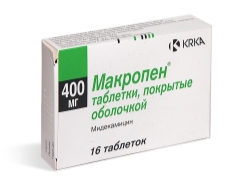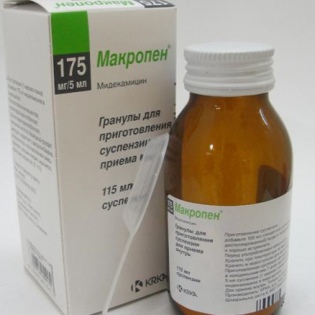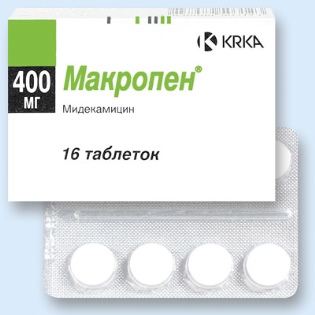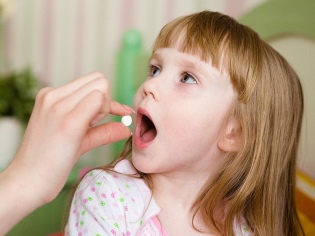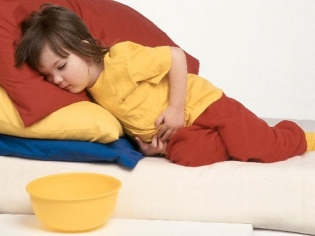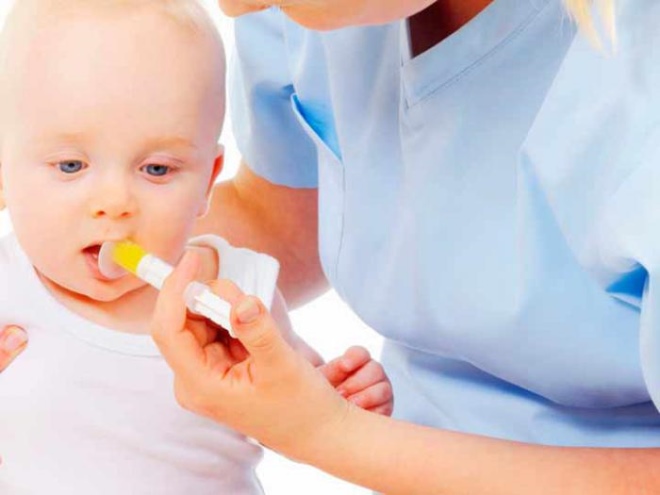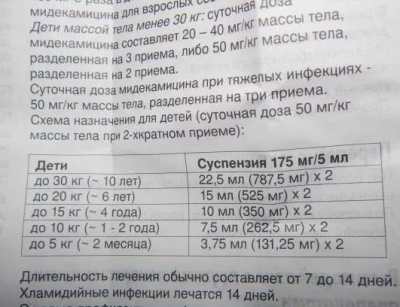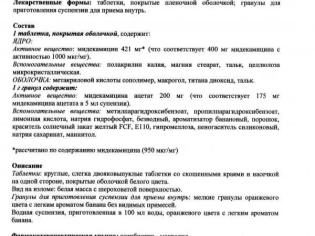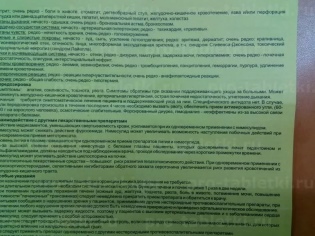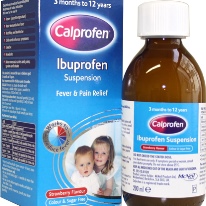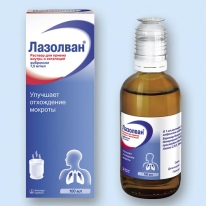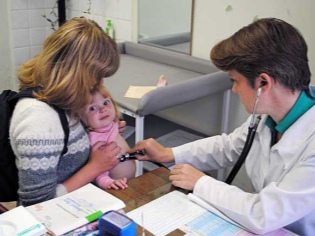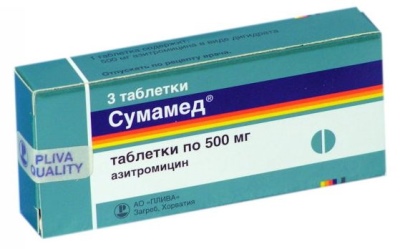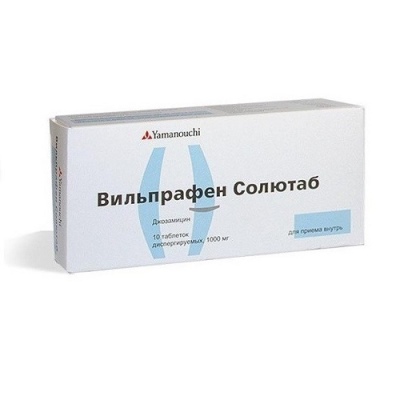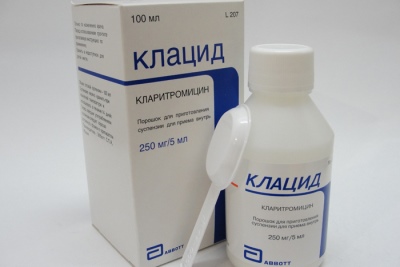Macropen for children: instructions for use
The group of macrolides is considered one of the most popular and effective among modern antibacterial agents. A representative of such a group of drugs is “Macropen” for children. If you are interested in when it is prescribed to children, as well as instructions for use - read this article.
Release form
“Macropen” is produced in two different forms:
- A bottle of granules from which to make a suspension. Such granules have a small size, smell of banana and orange color. After combining with water, they form an orange-colored liquid, which has a not very sharp banana smell. A dosing spoon, containing 5 ml of the preparation, is attached to the bottle.
- Tablets that have a shell. Their characteristics are round (slightly convex) shape and white color. One pack contains 16 tablets.
Composition
The main ingredient of “Macropen”, due to which the drug affects harmful bacteria, is midecamycin in the form of acetate. Its dosage in 5 ml of suspension is 175 mg, and in one tablet - 400 mg.
Additionally, the composition of the granules includes propyl and methyl parahydroxybenzoate, citric acid, yellow dye, mannitol, hypromellose, banana flavoring and some other substances. In tablets, midecamycin is combined with talc, MCC, macrogol, potassium polacrilin, and other components that create the core and shell of this form of the drug.
Operating principle
Midecamycin has the ability to inhibit the synthesis of protein molecules inside microbial cells. This action is called bacteriostatic. If you use children's "Macropen" in a high dose, it will destroy harmful microorganisms (act bactericidal). The drug activity is noted against:
- chlamydia;
- mycoplasma;
- streptococci;
- Neisseria;
- Helicobacter;
- pertussis sticks;
- legionella;
- staphylococcus;
- causative agent of diphtheria;
- Listeria;
- ureaplasma;
- campylobacter;
- Moraxell;
- bacteroids.
Indications
The reason to assign a child "Macropen" may be an infectious disease that has caused any of the microorganisms that are sensitive to such a drug. The drug is applied:
- With pneumonia, otitis media, sore throat, sinusitis, bronchitis and other bacterial diseases of the respiratory system.
- With infections of the subcutaneous tissue or skin.
- When infected with mycoplasmas, chlamydia or other pathogens of the genitourinary system.
- With pertussis and for its prevention.
- When enteritis, provoked by campylobacter.
- With diphtheria and for its prevention.
At what age is it allowed to take?
The drug in granules is prescribed from birth, and the tablet form is prescribed for children over three years old. "Macropen" tablets usually give young patients weighing more than 30 kg. If a child is already 3 years old, but his weight has not yet reached 30 kg, it is more convenient for him to give a suspension, since it is easier to dose and swallow it.
Contraindications
"Macropen" do not give children:
- With severe liver pathologies.
- With intolerance to midecamycin or any other ingredient of the medication.
If the child has previously had an allergic reaction to acetylsalicylic acid, the use of the drug requires caution.
Side effects
Sometimes a small patient with an “Macropen” treatment has an allergy, as well as a weakness or a negative reaction from the digestive tract. In addition, long-term therapy with such an antibacterial agent can provoke bacterial resistance, which will make treatment ineffective.
If a child has vomiting after a “Macropen” intake, as well as a feeling of heaviness in the abdomen, loose stools and other negative symptoms, you should consult a doctor and pick up an antibiotic instead of an equally effective medication. When prescribing the drug for a long period, it is important to monitor the functioning of the liver.
The pharmacist in this video also tells about Macropen, about the active substances in its composition, method of use, side effects and contraindications.
Instructions for use and dosage
To make a suspension, boiled hot water in a volume of 100 ml is added to a bottle of granules. A closed vial is shaken well to dissolve all the medicine evenly. Before each use, the medication is also advised to shake.
"Macropen" give the child before meals. With a body weight above 30 kg, the drug is administered 1 tablet (400 mg) - three times a day. For a child weighing up to 30 kg, the daily dose of the drug is calculated by multiplying the patient's body weight in kilograms by 20-40 (if the remedy is prescribed three times) or by 50 (if twice a day is prescribed).
In the annotation to the granules, there is a regimen of receiving the suspension, depending on the weight of the children.
- Weights up to 5000 g children are given 3.75 ml per dose (half a measuring spoon and another 1/4).
- For a child weighing 5-10 kg single dose of 7.5 ml (one and a half dosing spoons).
- For a patient who weighs 10-15 kg, one time requires 10 ml of suspension (2 scoops).
- A child weighing 15-20 kg, the medication is given at 15 ml per reception (this number is placed in three dosing spoons).
- For children weighing 20-30 kg a single dose of the drug is 22.5 ml (four and a half spoons).
At this dosage, the suspension is taken twice a day. The duration of admission is determined by the doctor, but usually the course lasts 7-14 days. Prophylactic administration against diphtheria lasts 1 week, and after contact with a sick person who suffers from whooping cough, medication is prescribed for a course of 7 to 14 days.
Overdose
If you accidentally give the child "Macropen" in a higher dose, it can cause nausea or vomiting. The manufacturer does not mention the toxic effect when the dosage of the drug is exceeded.
Interaction with other drugs
“Macropen” is often prescribed in combination with other medicines, in order not only to influence the cause of the disease, but also to alleviate the symptoms. When coughing, the antibiotic is supplemented with expectorant drugs (for example, “Lasolvan” syrup), and for severe pains, antipyretic drugs are prescribed (“Ibuprofen" other). At the same time there are some drugs that should not be given along with "Makropenom". They are noted in the instructions for such an antibiotic.
Terms of sale
To buy granules or pills at the pharmacy, you first need to consult with your doctor and take a prescription from him.
The average price of “Macropen” in suspension is 300-350 rubles per bottle, and the packaging of tablets costs about 260-300 rubles.
Storage conditions and shelf life
To preserve the therapeutic properties of “Macropen”, it should be kept at home in a dry place, at a temperature below 25 degrees Celsius. It is important to ensure that access to such a place is not available for small children. The shelf life of both forms of the drug is 3 years. After mixing the granules with water, storage of the suspension is possible for no longer than 7 days at room temperature — and up to 14 days if the bottle is placed in the refrigerator.
Reviews
About treatment of children "Makropenom" usually there are good reviews - both from pediatricians and from parents.They confirm the high efficacy of such an antibiotic for sinusitis, otitis media and other infections. One of the main advantages of mom's drugs is the presence of a liquid form. They say that it is easy to give a suspension to babies, and the sweet banana taste does not cause any complaints to most children. As for the disadvantages, they include the side effects of the drug and the short shelf life of the prepared suspension.
Analogs
Replace "Macropen" can be one of the antibiotics of the same drug group. The following options are possible:
- «Sumamed». The basis of this medication is azithromycin. The drug is released in suspension (it is given to children older than 6 months) and dispersible tablets (they can be given from three years).
- «Vilprafen Solutab». The action of such soluble tablets provides josamycin. The drug is used to treat children weighing more than 10 kg.
- «AzitRus». Such a drug based on azithromycin is available in portion sachets containing the active substance in different doses (50, 100 or 200 mg). The drug is prescribed from 6 months of age.
